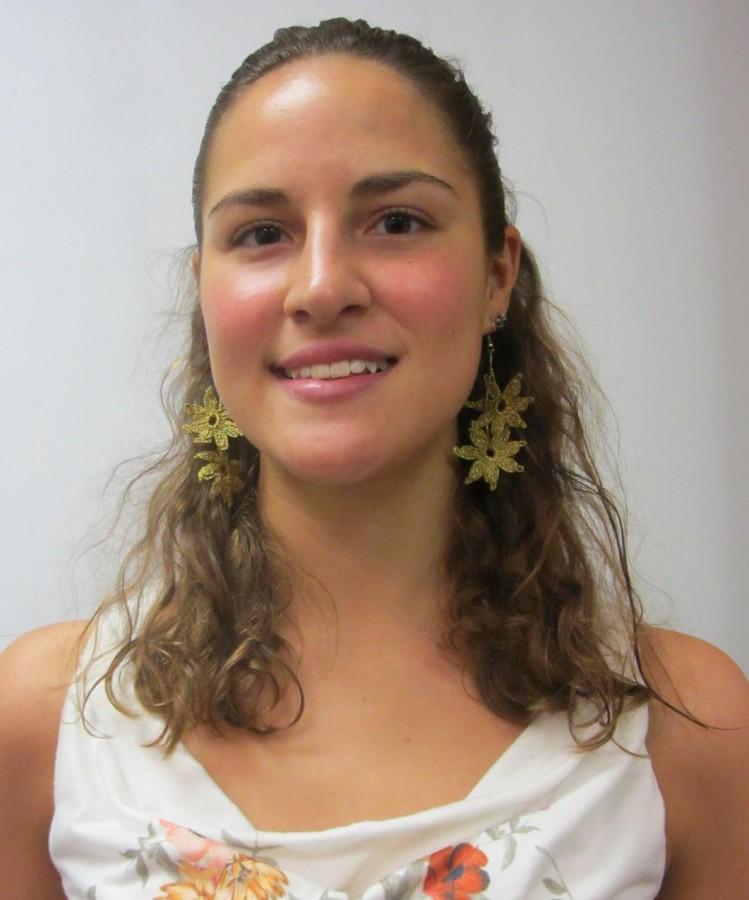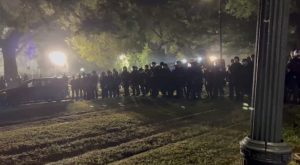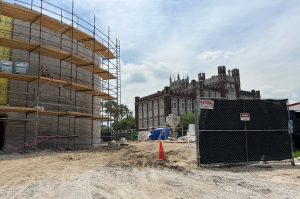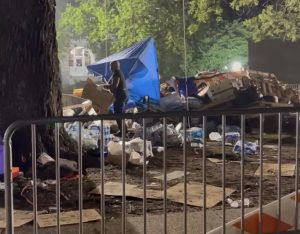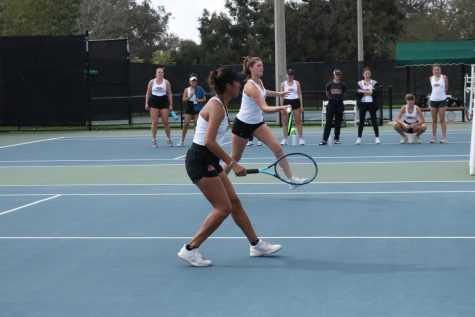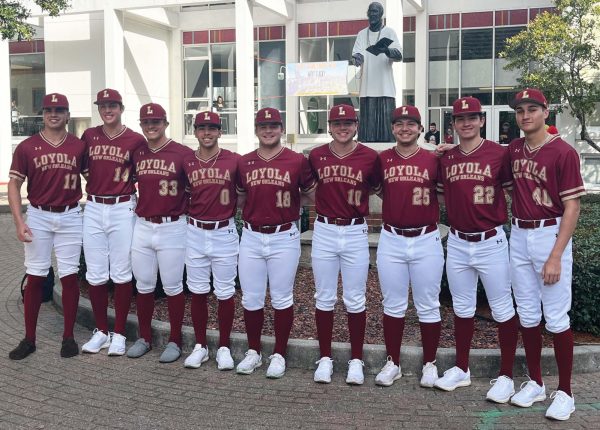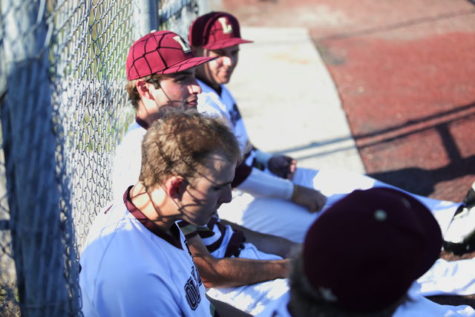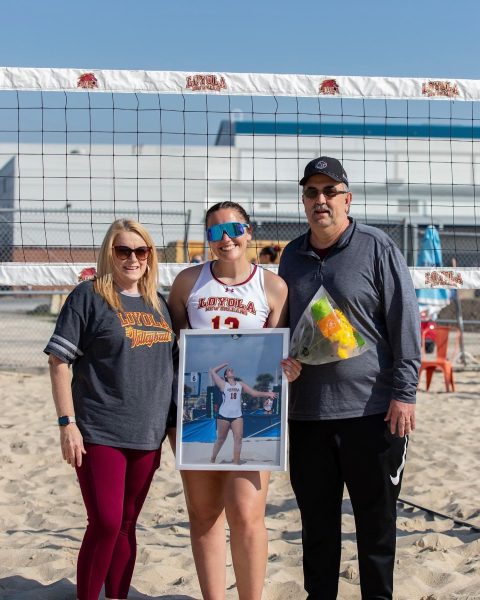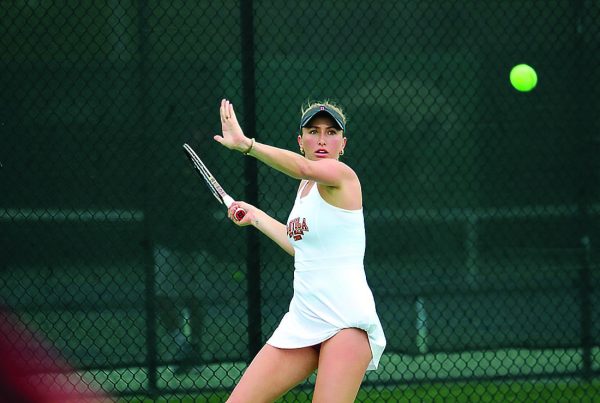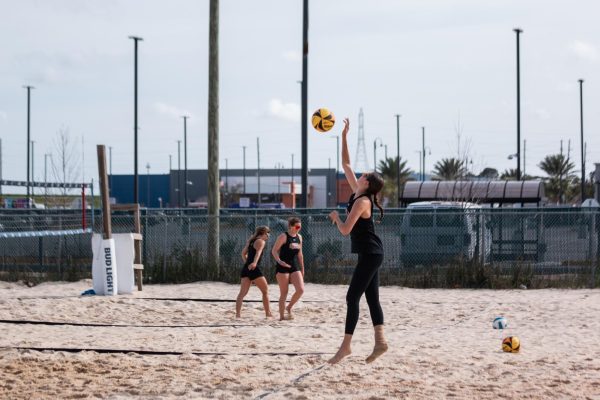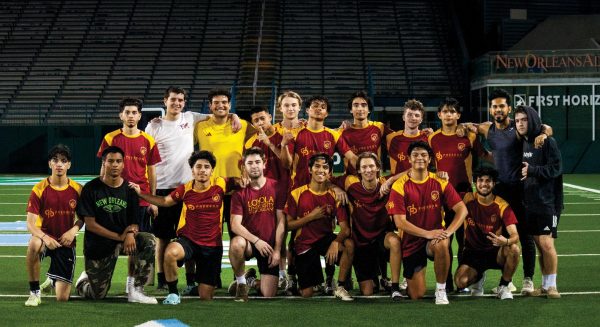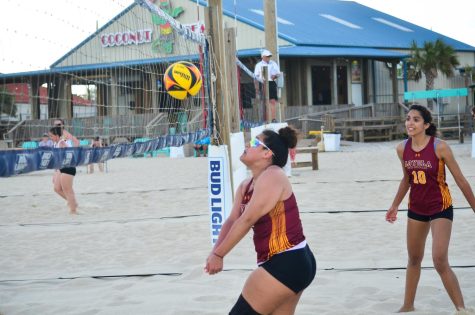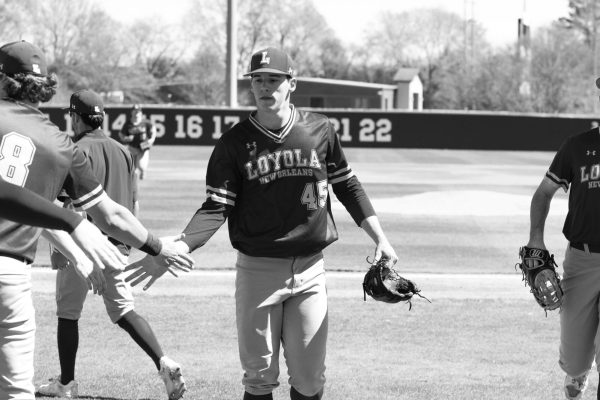Yerli Yabanci
(A Native Foreigner)
Jenna Knoblach is a visual arts and English writing senior. This narrative is of a jogging experience in Istanbul while she was studying abroad in the spring 2012 semester.
February 8, 2013
Flakes of white suspended in the air, and I displaced them with my form. There is something essential about going on a run to view a new location. It was necessary that I strap my shoes on and go.
What makes me tie up my laces to see Istanbul like a miniature caught in a shaken snow globe? It was my third morning ever in Turkey and my third run there. I am a native of New Orleans who gets panicky when a day in our three-week-long winter dips down to 49 degrees. Why could my third January morning there be unthinkable without my third run? I even contacted another runner before I arrived to ensure I was able to view my new location this way: these cliffs that teased my eyes with views of the Bosporus, these frozen blankets coating fir tree branches, these snowy gusts of wind nipping my skin. My running partner and I ran along the guard rail on the right side since it was better to view cars that entered the blind curve. Our eyes were big and tried to devour the sights of this new world painted with white. A clearing of trees with a path of fresh snow appeared alongside and lusted after me. I turned my head back to face the road and used thoughts of my loved ones to restrain myself. How much would I hurt them if something happened to me? The runner behind me took one look to the right and his shape followed. I immediately turned my body around and re-routed to my original instincts toward the view with the hidden horizon line. Down the snowy cliff we went, wandering into the unknown.
I didn’t know much about snow; the last time I had seen it was probably thirteen years ago while making the rounds to visit relatives up North. I learned here that if the snowfall was light and the ground underneath was close, my shoes made a squeaking sound when the ice particles crushed beneath my tread. The white covering on this cliff did not do that. My feet sunk into snow and disappeared from view. Was there anything underneath? Was it one layer of snow heaped after another and after another? A snow sea without a bottom? Could one step cause a leg to be fully submerged? Would stories be in the papers where my family learned that my body was discovered beneath one hundred feet of Turkish blizzard? I didn’t know. I knew I had to keep running down this cliff. Gravity and my urge to discover what lay beyond my field of vision were involuntary forces. I was unable to escape the temptation to know. The slope was so steep that I slowed my pace to prevent my feet from faltering. My shoes, then socks, then toes were drenched. They were not immune to this climate. I kept tumbling down the slope with the incline forcing each of my steps. Then my shoes started to slide. I fell forward. I felt something hard: my knees told me ground did, in fact, exist under this white mass. I got up and kept running down the cliff bounding after my running partner who was still somewhere below me. I still could not make out the horizon line. Finally reaching the bottom of the slope, the view burned into my retinas. The Bosporus was so green! It stretched for miles.
With the cliff preventing us from going any farther, we held the image in our vision for many moments. To begin the journey back up the steep incline, we turned around. Before getting very far, we spotted an alternate path to the right. This was an easy decision. I began to run up the slope: a mountainside touching my left shoulder and a cliff opening to an ice-draped forest touching my right. My veins pulsed electric. I breathed in all of this wild nature with my lungs. My smile flashed neon as the wind took bites of my skin. Up and up and up. I didn’t know where it would lead. If it would deliver us back to the main road or lead to another location entirely was not known. I spotted prints in the snow. Were they from hoofs? From a walking stick? Who had been here earlier? What person had divined this sacred spot? My running partner and I started to talk about Chris McCandless, the 22 year old who received his undergraduate degree, donated twenty-four thousand dollars of law degree savings, and hitchhiked to Alaska with little food or equipment. We expressed our admiration for somebody who chose to live a life deliberately – centered on discovering the rawness of the world by getting up close and touching it. What made him that way?
The main road greeted us back to civilization. Cars honked surprisedly at pedestrians on a rural mountain road and, more specifically, at two white people exercising recreationally in freezing weather. It wasn’t long before a new path was discovered. A narrow blacktop turned downward with a road sign featuring pictures, emotional all-capped words, and exclamation points. We couldn’t understand these words. We took this road. We did not know where we were headed, but our forms traveled there. I received something as essential as oxygen by going somewhere I’ve never gone, doing something I’ve never done, seeing something I’ve never seen. Confronting the new and being assaulted by the unfamiliar were what I sought on a daily basis. Why are there people out there who live this way? What makes their hunger for experience different from someone whose idea of a good day is to settle down with their cat and their worn copy of Pride and Prejudice in their cozy living room?
I kept running. I started to notice more signs with angry big letters punctuated by exclamation points. My foot slid off the asphalt and onto the ground at one point, and I let myself entertain thoughts of land mines. Maybe it was my imagination or maybe it was my adrenaline, but this place was a new one. Both the snow and the grass alike could hold things I was not aware of. I kept running. The blind curves of the forest opened up to show a headquarters of some sort with several small structures that looked like outposts. I kept running. A string of Turkish shouts broke the white silence. Inside one of the outposts, a uniformed man with a gun yelled something else and blew a whistle. I turned around. I ran the other way. A van passed me. It was filled with men in 1950s style sailor uniforms. I kept running.
The university was built on top of a mountain, and this was the basic guideline for each morning: leave campus, run down a hill, go somewhere I haven’t gone before, be yelled at in a language I don’t understand, run back up the hill. I accumulated the world this way. I raced down until an ancient fort rose up: a circular goliath that, when perched on top, stole my breath with the view of the Bosporus opening into the Black Sea. Sections were peppered with graffiti and littered with empty Efes bottles, but going there brought me to origins of the Ottoman eighteenth century and myths of the Golden Fleece. I marched through tiny fishing villages and brushed the edges of abandoned tunnels. I, with my merhabas and my running tights and my smiles, might have frightened locals. I confused vendors at the closest town’s Wednesday market when I pantomimed to barter for fistik and portakal (I had just learned these words and could not wait to use them). When my pockets stopped jingling with change, I would load my pack and run back, pretending I was a Kenyan. My body lacked the cunning of the Wright brothers’ experimental aircraft or the genius of Ford’s assembly line Model T., but it was a vehicle nevertheless: a transportation device that brought me to touch and taste and smell the new that I couldn’t keep myself from being magnetized to.


